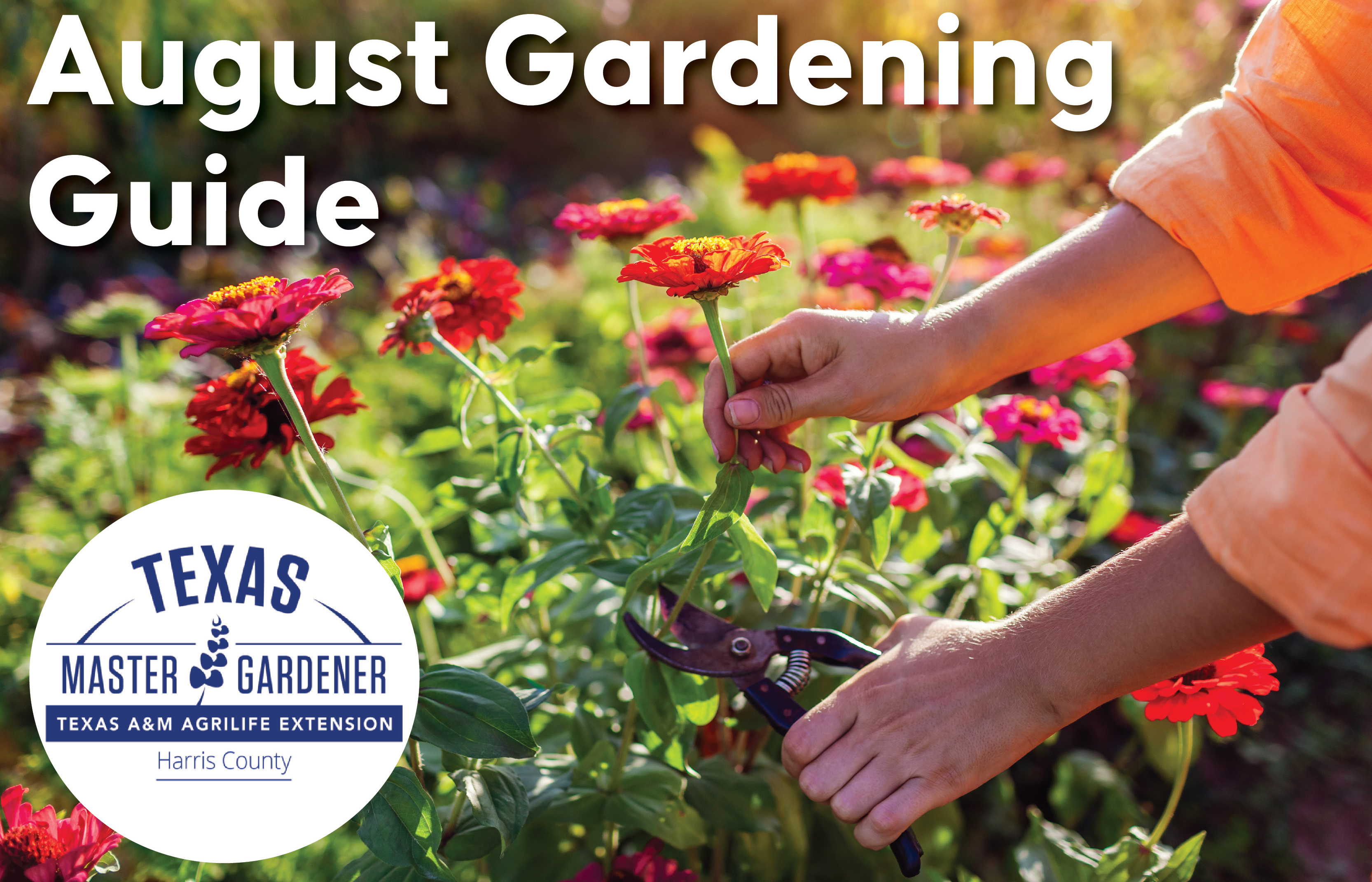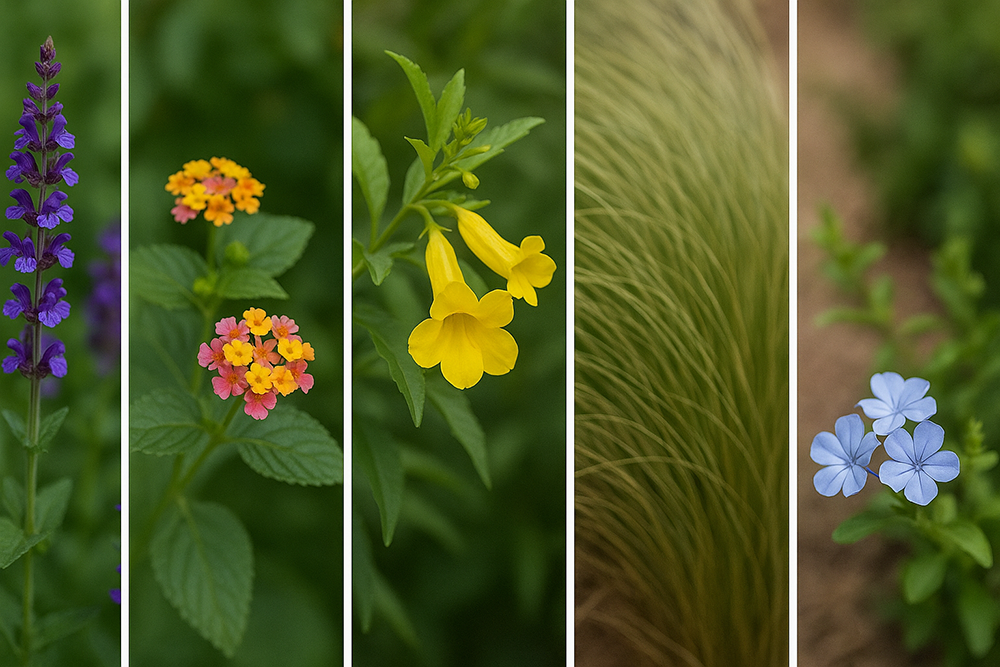
August Gardening Made Easier for Governors Place Residents with Free Local Help from Harris County Master Gardeners
August in Harris County means high heat, unpredictable rainfall, and lots of stress on lawns, flower beds, and vegetable gardens. But with a little planning—and a few tricks from local gardening experts—your landscape in Governors Place can stay healthy and beautiful.
Karen Shook, Harris County Master Gardener, knows how tough this month can be. “These hot summer months call for vigilance,” she said. “Watering guidelines typically have advice about depth of watering for specific plants—six inches for the lawn and 12 inches for established trees. One simple test is to use a long-handled, flathead screwdriver to check moisture depth.”
Quick August Gardening Tips
Beat the Heat
- Water wisely: Deep watering is better than frequent shallow watering.
- Mulch beds: Keeps soil moist and roots cool.
- Watch your plants: “On your daily walk through your neighborhoods and gardens, look for plants that still look good in the heat and consider using them in your garden,” Shook shared.
Flower Beds & Shrubs
- Deadhead annuals and perennials to encourage new blooms.
- Cut perennials back by one-third, add compost, fertilize, and water.
- Roses benefit from a late-August pruning, reducing size by one-third and removing diseased wood.
- Water azaleas regularly—they are vulnerable to drought.
Lawns & Groundcovers
- Mow frequently, but only remove one-third of blade height at a time.
- Watch for chinch bugs in sunny areas near driveways and curbs.
- August is the time for your final lawn fertilizer application of the year.
Vegetables & Edibles
- Prepare soil and plan your fall vegetable garden.
- Take tomato cuttings in early July for fall planting (if already rooted, they’re ready now).
- Want a Halloween pumpkin? Plant seeds now.
- Check out the HCMG's vegetable planting calendar here.
Planning Ahead
“July and August are good months to make plans for fall and spring gardens—in air-conditioned comfort,” Shook advised. This is the perfect time to:
-
Start cool-season flower seeds indoors: Snapdragons, pansies, dianthus, and violas can be started now in flats or small containers. By late August or early September, seedlings will be ready for transplanting outdoors when temperatures ease.
-
Plan your fall vegetable garden: Sketch out garden bed layouts, decide what crops you want to grow (think broccoli, carrots, lettuce, and kale), and order seeds early before popular varieties sell out.
-
Prepare garden beds: Remove summer annuals that are past their prime, refresh soil with compost or organic matter, and check irrigation systems so your fall plantings get off to a strong start.
-
Take notes on your summer garden: Which plants thrived despite the heat? Which struggled? These observations will help you choose varieties better suited to Harris County’s climate for next year.
Taking these steps during the hottest part of summer helps reduce stress and sets you up for success when cooler weather arrives. It also gives gardeners a head start on spring blooms and vegetables, ensuring a longer and more productive growing season.
Mobile Sidebar Ad
Top 5 Heat-Tolerant Plants for Harris County
Want plants that can handle Houston-area summers? These proven performers add beauty while thriving in high heat and humidity:
- Salvia – Long-blooming, pollinator-friendly, and available in multiple colors.
- Lantana – Drought-tolerant, pest-resistant, and loved by butterflies.
- Esperanza (Yellow Bells) – Showy yellow blooms from spring through fall.
- Mexican Feather Grass – Low-maintenance ornamental grass for texture and movement.
- Blue Plumbago – Sprawling shrub with striking sky-blue flowers.
These varieties require minimal maintenance once established and keep landscapes looking lush even when temperatures soar.
 From left to right: Salvia with vibrant purple spikes, multicolored butterfly-attracting Lantana,
From left to right: Salvia with vibrant purple spikes, multicolored butterfly-attracting Lantana, Who Are the Harris County Master Gardeners?
The Harris County Master Gardener program is part of the Texas A&M AgriLife Extension Service, a statewide network dedicated to community education and agricultural research. Master Gardeners are local residents who undergo extensive training from Texas A&M faculty and horticultural specialists before volunteering their time to help others.
These highly trained volunteers provide free, research-based information to help local residents:
-
Solve gardening problems: Whether it’s diagnosing plant diseases, identifying pests, or recommending the right soil amendments, Master Gardeners offer practical solutions.
-
Learn sustainable practices: They teach environmentally friendly methods, such as composting, water conservation, native plant use, and integrated pest management.
-
Improve landscaping knowledge: Homeowners can get advice on turf care, tree selection and pruning, flower bed design, and seasonal planting strategies tailored to Harris County’s climate.
-
Engage in hands-on learning: Demonstration gardens and teaching workshops give residents an opportunity to see recommended techniques in action.
-
Support community projects: Master Gardeners often partner with schools, neighborhood associations, and local nonprofits to create educational gardens and beautification projects.
Through these services, the program helps residents save money, protect natural resources, and grow healthier, more resilient landscapes—making Harris County greener and more beautiful year-round.
How to Get Help or Get Involved
-
Need gardening help? Call the Master Gardener Help Line for answers to your lawn and garden questions.
-
Want to volunteer? Training classes are offered regularly for anyone interested in becoming a Master Gardener.
- Looking for events? Public seminars and demonstration garden tours are open year-round.
For more details, visit Texas A&M AgriLife Extension – Harris County Master Gardeners at txmg.org/hcmga.
Stay tuned with My Neighborhood News for more seasonal gardening tips and local community resources designed specifically for Governors Place residents.
 Tiffany Krenek has been on the My Neighborhood News team since August 2021. She is passionate about curating and sharing content that enriches the lives of our readers in a personal, meaningful way. A loving mother and wife, Tiffany and her family live in the West Houston/Cypress region.
Tiffany Krenek has been on the My Neighborhood News team since August 2021. She is passionate about curating and sharing content that enriches the lives of our readers in a personal, meaningful way. A loving mother and wife, Tiffany and her family live in the West Houston/Cypress region.







